When Wu Bai (伍佰) and China Blue released Two Face Man (雙面人) in February it was obvious from the get-go that the grand-old-man of Taiwan's alternative music scene was taking the opportunity to veer away from his rock guitar oriented roots.
Packed with loops, edits and a host of dance music effects the album was an original and exciting piece of work. With the crux of the dance sound already firmly in place, Wu Bai has chosen to take the final steps towards a full-on dance album on his latest release, the aptly titled Remixes: Two Face Man (Go Pa 人面鯊).
Helping to give a new voice to Wu Bai and China Blue are the UK's Adam Freeland, Way Out West and Barry Gilbey, Belgian progressive house producer Housetrap, the US's Superchumbo, Taiwan's Victor Cheng, German hard trance act the Warp Brothers, Dutch DJ Ronald van Gelderen, Japan's Ram Rider and Singaporean DJ Virusindigo.
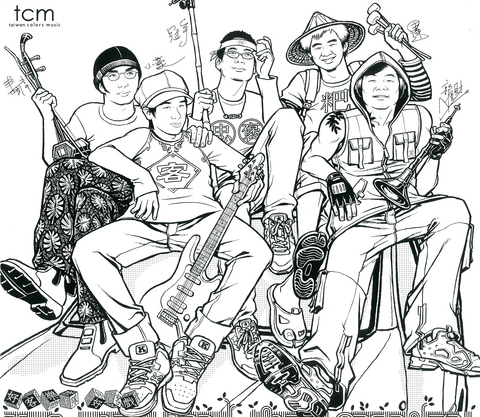
The most creative remixes include the Warp Brothers fiery rework of Two Face Man (雙面人), Freeland's pulsating and hard-edged version of Li Hai (厲害) and Virusindigo's 1970s-disco remix of Typhoon Heat (風颱心情).
While Wu Bai should be applauded for choosing to remix his second Taiwanese language album to date in order to give the local dance crowd something to shout, or rather dance about, isn't without its faults. Barry Gilbey's muted and lifeless remix of Seaplane (海底飛凌機) is a disappointment as is Cheng's wholly uninspired version of Li Hai.
Formed by ex-members of the award winning contemporary Hakka combo Labor Exchange (
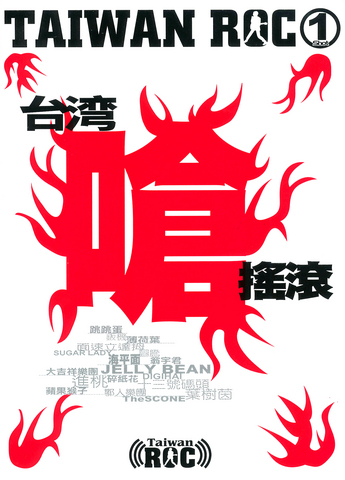
It blends jazz, rock, folk and even a myriad of classical Chinese/Hakka sounds to create what is possibly one of the most interesting and certainly one of the most creative albums to come out of TCM's studios in a longtime.
Although there is a mild contemporary feel to the much of the material, the heart of the album is firmly rooted in the past and the tunes are all based loosely on traditional Hakka folk songs. The trumpet-like suona and duel stringed violin-like erhu play a major role in all the album's numbers and the operatic-like vocals of lead singer, Chen Guan-yu (陳冠宇) and the powerful drumming of Chung Cheng-da (鍾成達) add an even greater sense of tradition to the musical affair.
Listeners looking for the mild-rock sound of Labor Exchange probably wont find much solace in Hohak Carnival, but those with an ear for an intelligent merger of tradition and modernity will be pretty much hooked from the start. Of the 10 tunes none will disappoint.
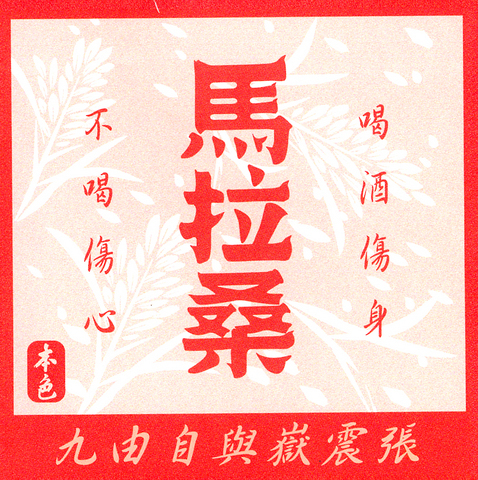
The album gets off to a pleasing beginning with the tune Playing and Singing (彈唱), which is a slow acoustic rework of a traditional Hoklo song. The classical and Hakka nature of the music picks up after the opener and the band's traditional instrumentation comes into play on tunes like the jerky post-rock Seven Day Song (七朝歌), the Nanguan infused instrumental Big Reunion (大團圓) and the retro The Flowering of the Peach Blossoms (桃花開).
In addition to the more standard crossover material the Hohak Band also takes the time to dabble in rap. OK, Destitute Man (窮苦人) is not a tune that will appeal to the hoards of Taiwanese kids who like to dress and act as if they are from the ghetto, but Chen and company do a pretty good job of creating an enjoyable and far from laughable Hakka rap tune.
Recorded at CTS (華視) studios last December, the Taiwan ROC (台灣嗆搖滾) DVD is at times interesting and at others, a painful visual insight into the sounds and appearances of 18 of the nation's up and coming underground bands.
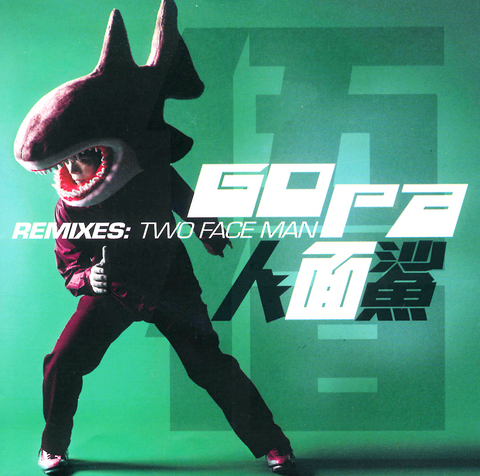
Given that very few of the acts have released records and live appearances by several of the bands are, thankfully pretty few and far between, it comes as no surprise that the quality of some of the music is lacking in both direction and zeal.
Stage presence and musical ability is also questionable, with several of the acts resembling limp lettuce and others jumping around the stage like there's no tomorrow. And while there's certainly nothing wrong with performing Pete Townsend-like scissor kicks and playing the guitar as low-slung as Johnny Ramone, neither should be attempted by band members who haven't mastered their instruments.
Acts like Suichihua (碎紙花), a combo that tries to mix the guitar snarl of the Clash with the more ska oriented sound of the Mighty Mighty Bosstones falls flat on the track Trouble (麻煩), and should concentrate on getting the rhythm right before settling for an stage image.
Equally inane is Jumping Egg (跳跳蛋), whose jerky Brit-pop-like Love is False (愛都是假的) and it's slow and annoying Rush (衝) warrant little in the way of praise and are instantly forgettable.
It's not all bad news though and some of the better acts to appear on the DVD include the rock combo Sugar Lady, downbeat act Icat
(
The star of the show, however, is Peppermint (薄荷葉). The three-piece act might employ an over-played anti-pop-like stage presence, with the drummer's back to the camera and the bassist and guitarist/singer adopting rigid posses, but it works well and matches the band's brilliantly morose sound.
Taiwan's foul-mouthed bad boy rocker Chang Chen-yue (
Like many of his previous tunes the title track, which deals with getting wasted and staying up all night, is packed with obscenities. Not that the gnarly buzzsaw guitar driven number needs them, musically it's edgy enough, but then we're talking about a guy who seems to think that swearing in English, Taiwanese or Mandarin is cool.
Of course, it's not and what it all boils down to in the music business is the need to record, produce and cut a clean version of the same tune for radio play. Regardless of the version you choose to listen to both are non-adventurous, yet well-produced rock tunes.
The EPs second tune and the one that has gotten most attention is Model (
His record company's legal department seems to have stepped in, however, and put a stop to what could have proven to be a series of costly legal battles. Instead of naming and shaming Chang simply waxes satirical about the pointlessness of worshipping celebrity models on what is a so-so power-pop tune.
The highlight of the new EP is the final track, Let Me Beat U Up! (
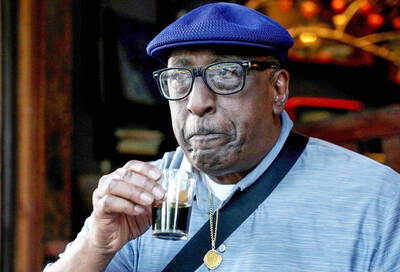
As we live longer, our risk of cognitive impairment is increasing. How can we delay the onset of symptoms? Do we have to give up every indulgence or can small changes make a difference? We asked neurologists for tips on how to keep our brains healthy for life. TAKE CARE OF YOUR HEALTH “All of the sensible things that apply to bodily health apply to brain health,” says Suzanne O’Sullivan, a consultant in neurology at the National Hospital for Neurology and Neurosurgery in London, and the author of The Age of Diagnosis. “When you’re 20, you can get away with absolute

When the South Vietnamese capital of Saigon fell to the North Vietnamese forces 50 years ago this week, it prompted a mass exodus of some 2 million people — hundreds of thousands fleeing perilously on small boats across open water to escape the communist regime. Many ultimately settled in Southern California’s Orange County in an area now known as “Little Saigon,” not far from Marine Corps Base Camp Pendleton, where the first refugees were airlifted upon reaching the US. The diaspora now also has significant populations in Virginia, Texas and Washington state, as well as in countries including France and Australia.

On April 17, Chinese Nationalist Party (KMT) Chairman Eric Chu (朱立倫) launched a bold campaign to revive and revitalize the KMT base by calling for an impromptu rally at the Taipei prosecutor’s offices to protest recent arrests of KMT recall campaigners over allegations of forgery and fraud involving signatures of dead voters. The protest had no time to apply for permits and was illegal, but that played into the sense of opposition grievance at alleged weaponization of the judiciary by the Democratic Progressive Party (DPP) to “annihilate” the opposition parties. Blamed for faltering recall campaigns and faced with a KMT chair

A police station in the historic sailors’ quarter of the Belgian port of Antwerp is surrounded by sex workers’ neon-lit red-light windows. The station in the Villa Tinto complex is a symbol of the push to make sex work safer in Belgium, which boasts some of Europe’s most liberal laws — although there are still widespread abuses and exploitation. Since December, Belgium’s sex workers can access legal protections and labor rights, such as paid leave, like any other profession. They welcome the changes. “I’m not a victim, I chose to work here and I like what I’m doing,” said Kiana, 32, as she